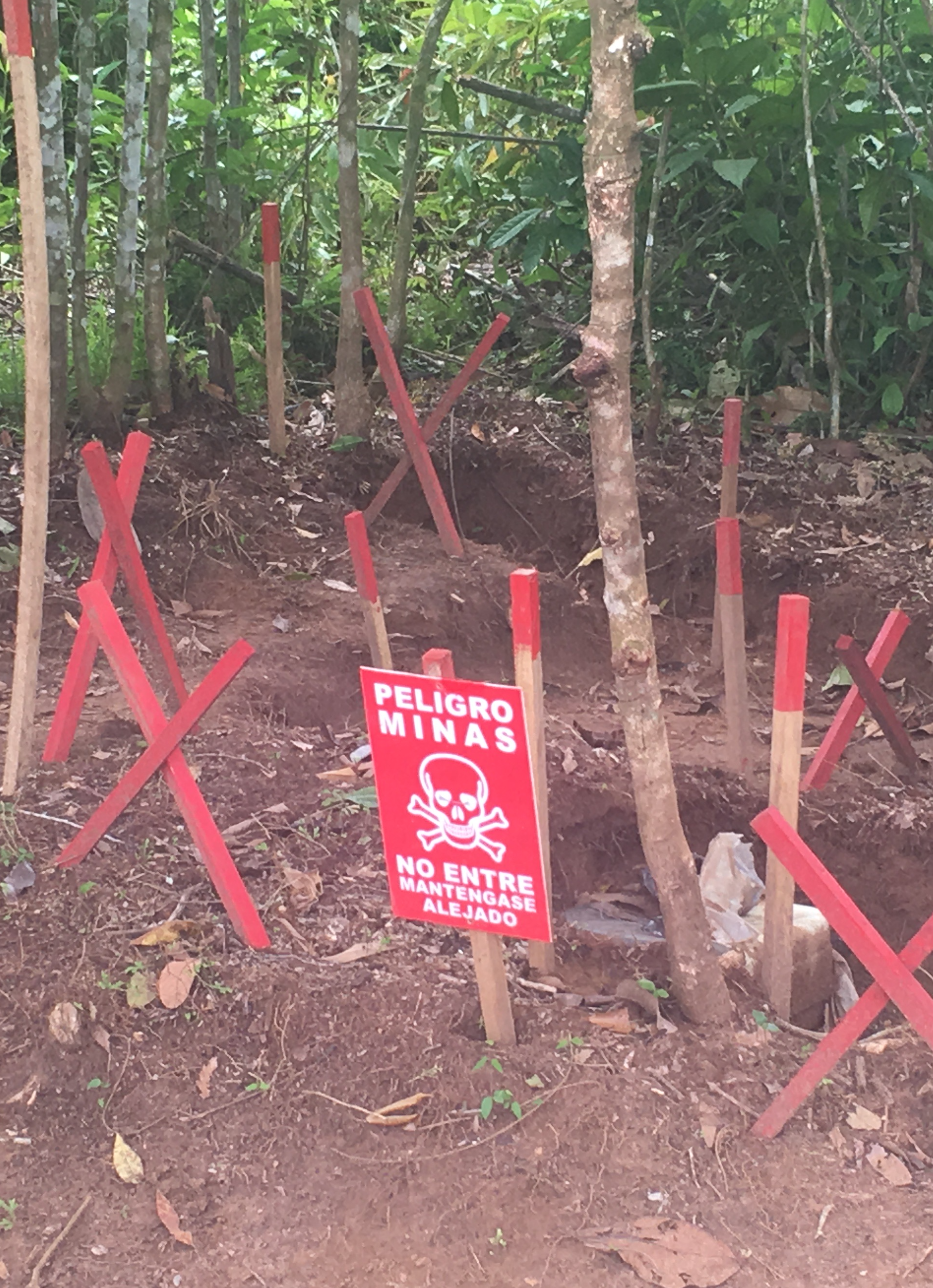Department of Anthropology Presents the
XV Annual Regina Flannery Herzfeld Symposium on
the Cultural Heritage of Native America
Hannan 108

The colloquial name for landmines in Colombia is “quiebra patas” (broken-legs). The term clearly envisages its effects: these handcrafted weapons combine pre-fabricated technology with syringes, fertilizer, mercury, chains, and broken glass, among other components. Focusing on a landmine as an artifact allows us to understand a complex web of human, non-human and more-than-human connections that hybridize nature, military knowledge, and technology in what I call “landmined landscapes.” These weapons, installed by guerrillas in Colombia, are intended to injure army members, but victims include indigenous Amazonian communities. In this talk, I explain how the last semi-nomadic community in Colombia, the Nükak Makú, has been affected by these devices. The mines are camouflaged in the jungle so that they appear invisible. This weaponized nature affects the territorial patterns of the indigenous people, changing their cultural practices including fishing, hunting and the consumption of seeds and fruits of the forest such as palms. Hence improvised weapons are transforming indigenous cultures in the Amazon.
Funded by Annual Gifts from Dr. Joan Roche to the Regina Flannery Herzfeld Memorial Fund
To request disability accommodations, please contact John Cogoli (cogoli@cua.edu).
